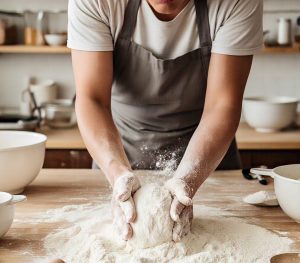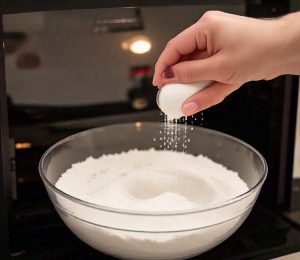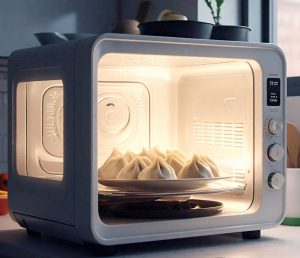Flour is a powder made from grinding raw grains, roots, beans, nuts, or seeds.
The question at hand is whether you can microwave flour or not.
This article contains detailed information about flour and whether it can be microwaved. If it’s viable to microwave flour, we’ll discuss how long you should do so without destroying nutrients and flavors. If not advisable to microwave flour, then we will suggest alternatives alongside tips and precautions. Expect answers to frequently asked questions as well as our final word regarding the subject matter of microwaving flour.

Jump To:
Is it Possible to Microwave Flour?
Yes, you can microwave flour. However, it is crucial to spread the flour out evenly in a shallow dish and stir frequently for even heat distribution. It’s an effective way of pasteurization at home but may alter its texture or baking properties. Oppositely, raw flour isn’t advisable for consumption due to the potential bacteria presence that cooking methods like microwaving could eliminate.
Facts About Flour
Here we will discuss the important things to note about flour.
- Type: It comes in several types including all-purpose, bread, cake, pastry and whole wheat.
- Nutrients: Provides carbohydrates for energy and is a source of protein. The exact nutrient content can vary based on the type of flour.
- Culinary Uses: Used widely in baking, cooking and frying as the main ingredient or thickening agent.
- Microwave Safety: As a raw product it requires heat treatment to kill bacteria which could be achieved through microwaving. However, care should be taken not to burn the flour during this process.
We’ve covered some key points about flour. Now let’s move on to other aspects related to microwaving flour.
Check out if you can make Couscous in the microwave.
How Long Can You Microwave Flour?
The duration for microwaving flour largely depends on the quantity. Typically, a cup of flour should be microwaved for approximately 1 minute and 15 seconds in total to ensure it reaches the desired temperature of 74°C (165°F). It’s recommended to stir halfway through this period for even heating.
Does Heating Flour in a Microwave Destroy its Nutrients?
No, heating flour in a microwave does not necessarily destroy its nutrients. Microwaves heat food by causing water molecules to vibrate, which produces heat that cooks the food. While high temperatures can degrade certain vitamins, the rapid cooking time in a microwave often helps preserve nutrients overall as compared to other cooking methods.
Check out if you can make steel cut oats in the microwave.
Does Heating Flour in a Microwave Affect the Flavors?
Microwaving flour doesn’t generally affect its flavor significantly since it primarily serves as a thickening agent or base ingredient that adopts other flavors within recipes. However, if overcooked or burnt due to excessive microwaving, then an unpleasant taste may arise.
We have now covered how long you can microwave flour and what effects this process might have on its nutritional value and flavor profile.
In the following section, we will discuss additional common questions related to this topic.
Frequently Asked Questions (FAQs)
Let’s now delve into the most commonly asked questions related to microwaving flour.
Can you microwave flour?
Yes, you can microwave flour. However, it is essential to spread it out in a thin layer on a microwave-safe plate and heat for small increments of time. This process helps kill any bacteria present in the flour while ensuring it does not burn.
Does microwaving flour kill bacteria?
Absolutely! Microwaving flour can effectively eliminate bacteria. When exposed to high temperatures produced by the microwave, harmful pathogens like E.coli found in raw flour get killed thus making your flour safe for consumption.
How long should I microwave flour to make it safe for consumption?
In general, heating up the raw 1 cup of flour on a medium-power setting for roughly 1 minute should be sufficient. The exact duration might vary based on your microwave’s wattage and efficiency so adjust accordingly.
What is the aftereffect of microwaving flour on its texture and taste?
Microwaving raw flour doesn’t tend to drastically alter its texture or taste if done properly but be careful not to overheat as that could lead to its quality degradation rendering a burnt taste or clumpy texture which isn’t desirable in recipes.
Check out if you can microwave a croissant.
This concludes our FAQs section regarding microwaving of flour with insights garnered from various sources and expert opinions around this topic.
Final Word
Microwaves are indeed a great tool when used cautiously they aid us kill potential pathogens present in otherwise unsafe-to-eat-raw food items such as the case with raw whole wheat flour. So yes, you can undoubtedly utilize this household appliance not just for reheating but also for making your cooking ingredients safe. Nevertheless, always remember each microwave and the product in question have their own characteristics which dictate optimal microwaving time and power settings.



